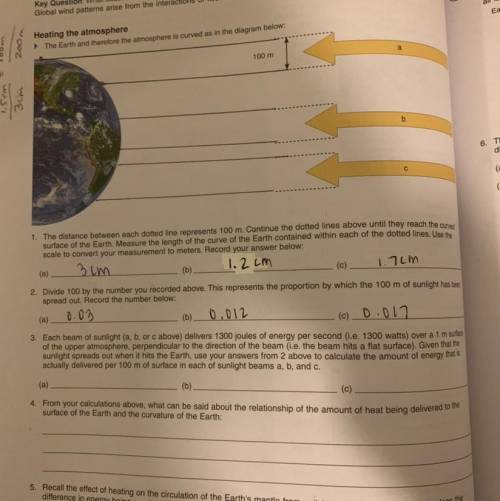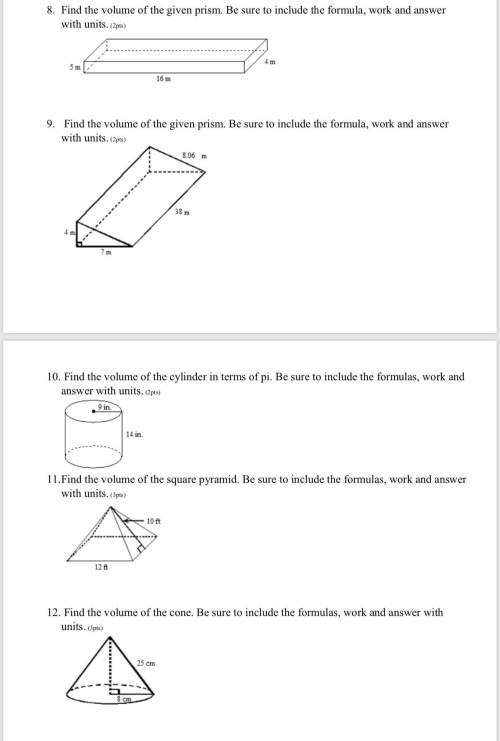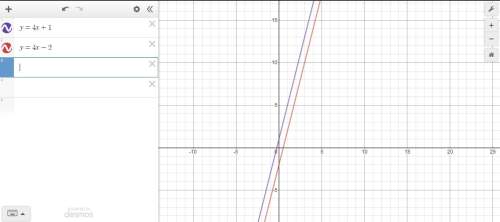
Mathematics, 30.11.2021 03:10 Crxymia
3. Each beam of sunlight (a, b, or c above) delivers 1300 joules of energy per second (i. e. 1300 watts) overains
of the upper atmosphere, perpendicular to the direction of the beam (ie. the beam hits a flat surface. Sveta
sunlight spreads out when it hits the Earth, use your answers from 2 above to calculate the amount of enerosta
(c)
actually delivered per 100 m of surface in each of sunlight beams a, b, and c.


Answers: 1


Another question on Mathematics


Mathematics, 21.06.2019 22:00
cassidy wants to cut the yellow fabric into strips that are 0.3 yards wide. how many strips of yellow fabric can cassidy make? yellow fabric 16 yards for $108.00.
Answers: 1

Mathematics, 21.06.2019 22:30
Which set of lengths could represent the sides of a triangle? a. 3, 7, 10 b. 4, 5, 10 c. 6, 8, 14 d. 12, 6, 7
Answers: 1

Mathematics, 22.06.2019 00:00
One of the complementary angles is 4 degrees mor than the other. find the angles (recall that complementary angles are angles whose sum is 90 degrees.) which of the following can not be used to solve the problem if x represents one of the angles? a. 2x-4=90 b. 2x+4=90 c. x+4=90
Answers: 1
You know the right answer?
3. Each beam of sunlight (a, b, or c above) delivers 1300 joules of energy per second (i. e. 1300 wa...
Questions


World Languages, 19.07.2019 01:20

Advanced Placement (AP), 19.07.2019 01:20

Advanced Placement (AP), 19.07.2019 01:20



Advanced Placement (AP), 19.07.2019 01:20

Mathematics, 19.07.2019 01:20



History, 19.07.2019 01:20


Mathematics, 19.07.2019 01:20

History, 19.07.2019 01:20










